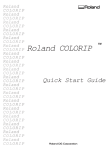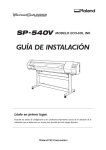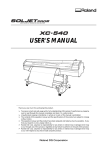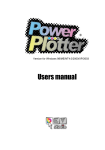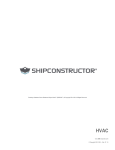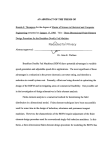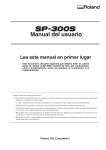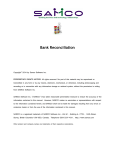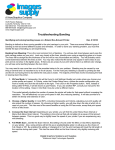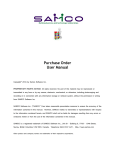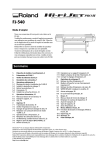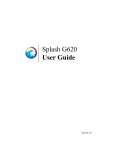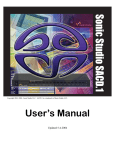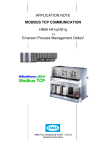Download Roland COLORIP
Transcript
Roland
COLORIP
Roland
COLORIP
Roland
COLORIP
Roland
COLORIP
Roland
COLORIP
Roland
COLORIP
Roland
COLORIP
Roland
COLORIP
Roland
COLORIP
Roland
COLORIP
Roland
COLORIP
Roland
COLORIP
Roland
COLORIP
Roland
COLORIP
Roland
COLORIP
Roland
COLORIP
Roland
COLORIP
Roland
COLORIP
Roland COLORIP
Version 2
Quick Start Guide
Thank you very much for purchasing the product.
• To ensure correct and safe usage with a full understanding of this product's performance, please be sure to read through this
manual completely and store it in a safe location.
• Unauthorized copying or transferral, in whole or in part, of this manual is prohibited.
• The contents of this operation manual and the specifications of this product are subject to change without notice.
• The operation manual and the product have been prepared and tested as much as possible. If you find any misprint or error,
please inform us.
• Roland DG Corp. assumes no responsibility for any direct or indirect loss or damage which may occur through use of this
product, regardless of any failure to perform on the part of this product.
• Roland DG Corp. assumes no responsibility for any direct or indirect loss or damage which may occur with respect to any
article made using this product.
Copyright © 2003 Wasatch Computer Technology, Inc.
Copyright © 2003 Roland DG Corporation
All Rights Reserved.
Copyright and property of this Software belong to Wasatch Computer Technology, Inc.
Copyright and property of this manual belong to Roland DG Corp. and Wasatch Computer Technology, Inc. No part of this publication may be
reproduced, stored in a retrieval system or transmitted, in any from or by any means, electronic, mechanical, photocopy, recording or otherwise,
without the prior written permission of the publisher.
COLORIP is a trademark of Roland DG Corp.
Windows and Windows NT are registered trademarks or trademarks of Microsoft® Corporation in the United States and/or other countries.
Pentium are registered trademarks of Intel Corporation in the United States.
Macintosh is a registered trademark of Apple Computer, Inc..
Other company names and product names are trademarks or registered trademarks of their respective holders.
Table of Contents
Part 1: Installation and Setup ......................................................................................... 3
1-1 System Requirement ....................................................................................................................... 4
1-2 Installing COLORIP ......................................................................................................................... 5
Installing COLORIP ................................................................................................................................................................................ 5
1-3 Printer Connections and Settings ................................................................................................... 6
Network Connection ................................................................................................................................................................................ 6
USB Connection ...................................................................................................................................................................................... 7
1-4 Setting up the Client Computer ....................................................................................................... 8
Windows Client ........................................................................................................................................................................................ 8
Macintosh Client ...................................................................................................................................................................................... 9
Part 2: Getting Started ................................................................................................... 11
2-1 Basic Operation for Printing .......................................................................................................... 12
Step 1: Open Image Files ...................................................................................................................................................................... 12
Step 2: Scaling and Printing .................................................................................................................................................................. 14
Step 3: Deleting Jobs ............................................................................................................................................................................. 15
2-2 Creating Image Files ..................................................................................................................... 16
The File Formats COLORIP Supports .................................................................................................................................................. 16
Creating Image Files and Sending to the RIP Server ........................................................................................................................... 16
Part 3: Quick Manual ..................................................................................................... 17
3-1 Job Operations .............................................................................................................................. 18
Stopping RIP'ing or Printing ................................................................................................................................................................. 18
To Re-output a Printed Job Rapidly ...................................................................................................................................................... 18
To RIP a Number of Image Files As a Group ....................................................................................................................................... 19
3-2 The Detail of Job Operations ([Print] Menu) ................................................................................. 20
[Print] - [RIP and Print] Menu .............................................................................................................................................................. 20
[Print] - [Rip Only] Menu ..................................................................................................................................................................... 20
[Print] - [Add to RIP Queue] Menu ...................................................................................................................................................... 20
[Print] - [Queues] Menu ........................................................................................................................................................................ 20
3-3 Efficient Tasks Through Selective Use of the Print Units .............................................................. 24
What Are Print Units? ............................................................................................................................................................................ 24
Selecting the Print Unit and Printer Settings ........................................................................................................................................ 24
Working with Jobs within Each Print Unit ........................................................................................................................................... 25
Part 4: Contour Cutting ................................................................................................. 27
4-1 Contour Cutting ............................................................................................................................. 28
Activating Cutting Path Processing ...................................................................................................................................................... 28
Outline Jobs ........................................................................................................................................................................................... 28
4-2 Creating Cutting Path in Specific Applications .............................................................................. 29
Creating a Cutting Path in Corel 9/10/11 .............................................................................................................................................. 29
Creating a Cutting Path with Adobe Illustrator 8/9/10 ......................................................................................................................... 30
4-3 Printing and Cutting Simultaneously ............................................................................................. 31
Printing and Cutting ............................................................................................................................................................................... 31
When No Cutting is Performed ............................................................................................................................................................. 31
4-4 Printing and Cutting Separately .................................................................................................... 32
Settings to Perform the Cutting Only .................................................................................................................................................... 32
Settings to Print with Crop Marks ......................................................................................................................................................... 34
Cutting after Lamination ....................................................................................................................................................................... 36
Cutting Only ........................................................................................................................................................................................... 37
Table of Contents
1
2
Part 1:
Installation and Setup
3
1-1 System Requirement
Although processing large image files places heavy demands on host computers, Roland COLORIP will run reliably on
old and slow computers with as little as 256 MB of memory. However, this does not mean that it is a good idea to use
such an old computer, because slower systems will not likely be able to provide adequate speed to drive the latest
printers.
We recommend as fast computer system as possible. The principle to keep in mind is that the faster the CPU, the faster
the software will process your images. Therefore, it is advisable to buy the fastest computer you can. While more RAM
will also help speed up the processing, it is the speed of the CPU that directly affects how fast the software runs. If you
are processing large files over 100 MB in size, it is advisable to upgrade to more than 512 MB of memory.
MINIMUM SYSTEM REQUIREMENTS
• Pentium 133 MHz CPU
• 256 MB RAM
• 2 GB Hard Drive
• Windows 2000 or XP
RECOMMENDED SYSTEM REQUIREMENTS
• Pentium 4 1.5 GHz CPU or faster
• 512 MB or more RAM
• 40 GB or larger Hard Drive
• Windows 2000 or XP
Available Operating Systems
Although Roland COLORIP will run under Windows 2000/XP, it will not run on a Macintosh. If you use Apple computers to
create your images, you can use PC-to-Mac connectivity software, such as Miramar's PC MacLAN, Thursby's Dave, or Windows 2000 Server to connect your Mac and PC over a network.
Network Connections
It has become common to connect high-end inkjet printers via ethernet. What is overlooked is that a single high-end
inkjet printer can demand well over 500 kilobytes per second for long periods of time. This is a sustained data-rate that
can seriously impact your network, especially if you are set up with an older 10Base-T arrangement. Data may then fail
to reach your printer fast enough, causing problems such as pausing of the print head.
For network printing, we recommend the use of 100Base-TX ethernet cards that install on the PCI bus of the computer
running Roland COLORIP. We also suggest the use of 100Base-TX switches (not hubs).
You should consider connecting Roland COLORIP to these printers on an isolated network with its own switch and
cables, and with a dedicated network card in the computer running the Roland COLORIP software. Isolating heavy
traffic will improve overall network performance.
4
Part 1: Installation and Setup
1-2 Installing COLORIP
Installing COLORIP
PROCEDURE
1
Insert the Roland COLORIP CD-ROM in the
appropriate CD-ROM drive.
The setup menu appears automatically. Click
[Install].
2
If this window appears, click [No].
3
Click [Finish].
4
Click [OK].
5
Start COLORIP. Click [Start] and then click [Program] - [Roland] - [Roland COLORIP].
6
From the [Language] menu, choose the suitable language for the interface language.
If necessary, specify the destination drive and folder to
install the software.
The program files are copied to the destination folder.
Part 1: Installation and Setup
5
1-3 Printer Connections and Settings
The connection method differs according to the printer model. Check the type of the connection port on the printer
you're using and follow the appropriate procedure below to make the connection.
Network Connection
This is for a printer with an Ethernet network connection using 100Base-TX or the like.
PROCEDURE
1
Finish the preparations for connection on the
printer, such as assigning an IP address to the
print server installed in the printer (RolandPrintServer or the like).
2
Make sure the power to the printer is switched
on.
3
Connect the printer and the computer (the RIP
server) to the network.
4
At the [Print] menu, click [Setup] to display the
[Setup] window.
5
Select your printer in the [Printer Model]. Select the one that does NOT contain "Cut Only"
after the model name.
6
Click [TCP/IP List]. Here, enter the following
information.
TCP/IP address: Enter the IP address assigned to the
printer (print server).
Port: Enter "9100."
Protocol: Select "Raw."
6
7
Click [Add], then click [Save List].
8
For [Physical Connection], select the IP address
you entered in step 6.
9
Click [OK] to close the [Setup] window.
Part 1: Installation and Setup
1-3 Printer Connections and Settings
USB Connection
This is for a printer connected using a USB cable.
Please note that a USB connection requires a separate Windows-based driver included with the printer.
PROCEDURE
1
Install the Windows-based driver for the printer
you're using, then connect the printer and the
computer using a USB cable.
For information about how to install it, refer to the documentation for the driver included with the printer.
2
Make sure the power to the printer is switched
on.
3
At the [Print] menu, click [Setup] to display the
[Setup] window.
4
Select your printer in the [Printer Model]. Select the one that does NOT contain "Cut Only"
after the model name.
5
For [Physical Connection], select [USB_xxxxxxnn] (where "xxxxxx" is the printer model name
and "nn" is a 2-digit number).
6
Click [OK] to close the [Setup] window.
"LPT1" Connection
When your printer has a printer port and you select the "LPT1" for the [Physical Connection], it is possible to connect by a
printer cable. However, this may cause interruptions of data-flow to the printer, which is a common cause of "banding" problems.
Part 1: Installation and Setup
7
1-4 Setting up the Client Computer
The computer for creating image files is called a client computer. It is useful for passing image files to connect the client
with the RIP server (the computer which is installed the RIP software) via a network. One computer can work as the
client and the RIP server at the same time.
COLORIP can handle image files such as PostScript, EPS, and Tiff. However, you need to install the PostScript driver
on the client when creating PostScript files.
Windows Client
Windows 95/98/Me
1
Insert the Roland COLORIP CD-ROM in the
appropriate CD drive. Although the setup menu
appears automatically, click [X] button to exit
the menu.
2
Go to the [Start] menu, click [Settings] - [Printers].
3
Double-click on the [Add Printer] icon. The Add
Printer Wizard will appear. Click [Next].
4
5
Choose [Local printer]. Click [Next].
6
7
Choose your printer model. Click [Next].
8
Run through the next few steps of naming the
printer and printing a test page (optional) and
you will get to the screen with the button labeled [Finish]. When you click [Finish], a whirl
of activity ensues as Windows copies the necessary files and installs the new printer.
Click on [Have Disk] and then [BROWSE] to
the Roland COLORIP CD-ROM. On the CD
there is a folder called x:\PPDs\Win95-98-ME.
Click on the printer.inf file and then click on [OK],
and [OK] again.
On the next screen you will be asked what Port
to print to. Choose [File:]. Click [Next].
You have completed the setup of a PPD on the Windows.
You can now access the printer, as you would any other
printer from any application on the Windows.
8
Part 1: Installation and Setup
1-4 Setting up the Client Computer
Windows NT/2000/XP
1
Insert the Roland COLORIP CD-ROM in the
appropriate CD drive. Although the setup menu
appears automatically, click [X] button to exit
the menu.
2
Windows XP:
From the [Start] menu, open [Control Panel] then click
[printers and Other Hardware]. Click [Printers and Faxes]
and click [Add a Printer].
Windows NT4.0 or 2000:
Go to the [Start] menu, click [Settings] - [Printers].
Double-click [Add Printer] icon.
3
4
5
The Add Printer Wizard will appear. Click [Next].
6
Click on [Have Disk] and then [BROWSE] to
the Roland COLORIP CD-ROM.
On the CD, open the "x:\PPDs\WinNT4" or
"x:\PPDs\Win2000-XP" folder.
Click on the printer.inf file and then click on [OK],
and [OK] again.
Choose [Local printer]. Click [Next].
On the next screen you will be asked what Port
to print to. Choose [File:]. Click [Next].
When you are using under Windows NT4.0, open the
"x:\PPDs\WinNT4" folder. When you are using under
Windows 2000 or XP, open the "x:\PPDs\Win2000-XP"
folder.
7
8
Choose your printer model. Click [Next].
Run through the next few steps of naming the
printer and printing a test page (optional) and
you will get to the screen with the button labeled [Finish]. When you click [Finish], Windows
will copy the files install the new printer.
You have completed the setup of a PPD on the Windows,
you can now access the printer, as you would any other
printer from any application on the Windows.
Macintosh Client
If you are using Macintosh, use the Laser Writer 8 and the like as the driver. If you specify the destination as a "File", the
PostScript file is saved.
You can find PPD files for Macintosh on the Roland COLORIP CD-ROM, in the "x:\PPDs\Mac" folder,.
Part 1: Installation and Setup
9
10
Part 2:
Getting Started
This part shows that the basic procedures for opening an image file into
COLORIP and printing it.
11
2-1 Basic Operation for Printing
Step 1: Open Image Files
PROCEDURE
12
1
At the [Print] menu, click [Setup] to display the
[Setup] window.
2
Click the [Imaging Configuration] box.
3
Double-click the ink type you're using.
4
Double-click the media you're using.
5
Finally, click the print quality to select.
6
Click [OK] to close the [Setup] window.
Part 2: Getting Started
2-1 Basic Operation for Printing
7
At the [File] menu, click [Open]. Choose your
file from the appropriate folder and open it.
The image will appear in the large box that occupies the
right side of the main screen.
Deleting Jobs
We recommend [Imaging Configuration] is chosen after deleting all jobs. Changing a configuration without deleting all jobs
may cause bad printing. For more information about deleting jobs, please refer to "Step 3: Deleting Jobs."
If the printer is equipped with a heater (printing heater), select the following for the ink type.
• For Printing Using Heaters
Select an item that has "HT" at the end. In this case, a heater-compatible color profile is used.
• For Printing Without Using Heaters
Select an item that does not have "HT" at the end.
Cutting Procedure
For information about detailed cutting procedures, refer to "Part 4: Contour Cutting."
Part 2: Getting Started
13
2-1 Basic Operation for Printing
Step 2: Scaling and Printing
PROCEDURE
1
Click the [Size] tab on the left upper corner of
the main screen.
2
Enlarging or reducing an image is available if
needed. Check the box as shown in the figure
and then enter a new value in the [Scale Percent] in percentage terms. You can also enter
a new value in the [Output] directly.
Then press [Enter] on the keyboard.
3
Make sure that the [Queue Processing Active]
box in the upper left of the main screen is
checked.
4
At the [Print] menu, click [RIP and Print].
5
A [PostScript Interpreter] bar will launch on your
task bar during RIP'ing, followed by a [Print
Spooler] bar. Clicking on either of these bars
will launch windows that provide information
regarding the progress of your job.
RIP'ing starts, and then printing begins.
The unit of the Size
Inches or centimeters can be selected as the unit of the print size. From the [Options] menu, click [Inches] or [Centimeters].
14
Part 2: Getting Started
2-1 Basic Operation for Printing
Step 3: Deleting Jobs
After finishing printing, delete a job by the following procedure.
Although you can leave the job if you want to repeat the same printing, basically don't change the [Imaging Configuration] setting while having the job left.
PROCEDURE
1
At the [Print] menu, click [Queues].
The [Queues] window appears.
A list of remaining jobs is displayed. The lists are of two
types: RIP Queue and Print Queue.
2
In the RIP Queue list, click the job to select it.
3
Click the
list.
4
In the same way, delete the jobs in the Print
Queue list as well.
5
Click [OK] to close the [Queues] window.
Be sure to click [OK] here. If the window is closed by
clicking [Cancel], the jobs are not deleted.
You can select more than one job by holding down either
the [SHIFT] key or the [Ctrl] key as you click.
button at the top of the RIP Queue
The jobs you selected are deleted.
RIP Queue list
Print Queue list
Part 2: Getting Started
15
2-2 Creating Image Files
The File Formats COLORIP Supports
The file formats COLORIP supports are the following: PostScript, EPS, PDF, TIFF, JPEG and DCS 2.0.
Creating Image Files and Sending to the RIP Server
There is no special regulation for creating image files. If the program you're using supports saving files as EPS format,
you can use it. Just choose the file format it supports.
To send image files to the RIP server, use Windows file sharing feature. In case of the Macintosh client, use the program
such as PC MacLAN, DAVE or Windows 2000 server and the like.
In case of PostScript Files
There are few programs that can save files as PostScript format directly. In most cases, create the file through a PostScript
driver. Choose the driver such as Adobe PS or LaserWriter 8 by the printer settings of your program and perform
operations like normal printers.
16
Part 2: Getting Started
Part 3:
Quick Manual
For more detailed information, click [Help] button on a dialog box, or
click [Help subjects] from [Help] menu to refer "Roland COLORIP Online
Help."
* A browsing program such as "Internet Explorer" is required to view the online help.
17
3-1 Job Operations
Stopping RIP'ing or Printing
PROCEDURE
1
Click a [PostScript Interpreter] bar or a [Print
Spooler] bar launched on the task bar of Windows.
The dialog box appears.
2
Click [Cancel]. Click [Yes].
If printing has already started, perform a operation to
cancel the printing on your printer.
To Re-output a Printed Job Rapidly
When printing is performed, the print job (that is, the data that has undergone RIP'ing) remains. When you want to take
something that has been printed once and print it a second time, you can skip RIP'ing by outputting the remaining print
job.
Note, however, that it is also possible to make the setting to automatically delete the print job after printing is finished.
In this case, RIP'ing must be repeated.
PROCEDURE
1
At the [Print] menu, click [Queues].
2
In the Print Queue list, click to select the job
you want to print.
The [Queues] window appears.
3
Go to the top of the Print Queue list and click
the
button.
The value in the [Copies] box for the list changes to "1."
4
Click [OK] to close the [Queues] window.
The job you selected is printed.
To Print Multiple Copies of the Same Item At Once
button several times. Each time you click, the number of copies is increased by one.
In Step 3, click the
If you want to discard the changes, close the [Queues] window by clicking [Cancel].
18
Part 3: Quick Manual
3-1 Job Operations
To RIP a Number of Image Files As a Group
You can open a number of image files and perform RIP'ing and printing for them as a group.
PROCEDURE
1
Display the [Setup] window, then specify the
media and the print mode.
2
Open a single image file and make the settings
for the size and the like as required.
3
At the [Print] menu, click [Add to RIP Queue].
4
Repeat steps 2 and 3 to add to the RIP Queue
all the image files you want to process as a
group.
5
At the [Print] menu, click [Queues].
6
In the RIP Queue list, hold down the [Crtl] key
or the [Shift] key and click all the jobs you want
to process as a group.
7
Click the
8
The open image file is added to the RIP Queue.
The [Queues] window appears.
button.
You can also specify the number of copies here. Clicking
button again, will increase the number of copies
the
by one.
If you want to discard the changes, close the [Queues]
window by clicking [Cancel].
Click [OK] to close the [Queues] window.
RIP'ing is performed in sequence, and the image files you
selected are printed.
Add Jobs to Queues by Dragging and Dropping
The files can be added to the RIP Queue or Print Queue directly by dragging and dropping them to the queue list.
In this case, however, scaling or trimming are not available.
Selecting Media or Print Quality
When printing several image files at one time, you are not able to select the different media or the print quality for each file.
Part 3: Quick Manual
19
3-2 The Detail of Job Operations ([Print] Menu)
The [Print] menu lets you carry out a wide variety of operations for jobs. This menu allows you to perform basic printing
and RIP'ing, set up job parameters, monitor and change queue order, select print layout mode and other key functions.
[Print] - [RIP and Print] Menu
The simplest way to print a job is to open the file, click the [RIP and Print] from the [Print] menu. Your job will be
RIP'ed and printed.
[Print] - [Rip Only] Menu
This button does what it says. The file will be RIP'ed, but not printed. After processing, the file will be added to the print
queue. It can later be accessed and printed.
[Print] - [Add to RIP Queue] Menu
This option neither RIP's nor prints the job, but adds it to the RIP queue for processing later.
[Print] - [Queues] Menu
You can manage queues and jobs, perform layout for a number of jobs, and carry out other operations.
About Queues and Jobs
A job refers to data that is to undergo RIP'ing and output. Data for RIP'ing is called a "RIP job", and data for output to
a printer is called a "print job." A queue is something like a container where waiting jobs are placed. The container
where RIP jobs are placed is called the "RIP queue," and the one where print jobs are placed is called the "print queue."
Four Print Units
This RIP program has four sets of queues. You can manage then individually and assign separate printer settings to each
one.
You can accomplish printing tasks efficiently by judiciously making selective use of the four print units. For more
information, refer to "3-3 Efficient Tasks Through Selective Use of the Print Units."
20
Part 3: Quick Manual
3-2 The Detail of Job Operations ([Print] Menu)
Overview of the [Queues] Window
[Print Unit] Check Boxes
You select which of the four print units you want to view.
[RIP Queue] List
This displays a list of jobs for RIP'ing. Setting the [RIP] status to "R" causes RIP'ing to be carried out. Also, entering the
number of copies to print in the [Copies] status box causes printing to be performed immediately after RIP'ing ends.
You make the settings for these status boxes using the
and
buttons described later in this document.
[Print Queue] List
This is a list of the jobs that have been RIP'ed and can be printed immediately. Entering a value for the number of copies
to print in the [Copies] status box causes the specified number of copies to be printed.
You make the settings for this status box using the
and
buttons described later in this document.
Button
Clicking this after selecting a RIP job opens the original image file. Except for being able to select the file from the RIP
queue, this is identical to choosing [Open] from the [File] menu.
Button (RIP Queue)
Selecting RIP jobs, clicking this button, then clicking [OK] performs RIP'ing and printing. The number of copies is
determined by the number of times you click on this button.
Part 3: Quick Manual
21
3-2 The Detail of Job Operations ([Print] Menu)
Button (Print Queue)
Selecting print jobs, clicking this button, then clicking [OK] prints the job. The number of copies is determined by the
number of times you click on this button.
Button
Selecting jobs, clicking this button, then clicking [OK] deletes the job.
Button
Selecting jobs and clicking this display the RIP Queue editing menu or the Print Queue editing menu. Here is where you
make the settings for job status and the like.
[Immediate Print] Check Box
This check box allows you to choose when the printer begins printing your job. When the box is unchecked, the printer
will begin printing only after the entire file has been RIP'ed. When the box is checked, the printer will begin printing as
soon as the RIP has begun generating data.
The advantage of this feature is that it can save total processing time. The disadvantage is that it can cause problems
with print quality: if the RIP provides data to the printer too slowly, the printer may pause.
Highlighting Multiple Queue Entries
In both the RIP Queue list and Print Queue list, limited simultaneous operations can be performed on multiple queue listings.
Use [Shift] or [Ctrl] keys and click on the jobs or drag the mouse to select multiple jobs.
Press [OK] Before Exiting:
If you don't click on [OK] when you exit the [Queues] window (as opposed to clicking on Cancel), the changes you have made
will be discarded.
Queued File Not Printing:
Files that have the number "1" or greater displayed in the [Copies] column should print in the order they are listed. If they are
not printing, it may be because [Autonesting] or [Manual Print Layout] has been checked and "left on". Uncheck the appropriate box and printing should begin.
RIP Queue Editing Menu
Changing RIP status
The [RIP at first opportunity] check box in the upper left
corner allows you to change the status of a waiting file, in
other words, to flag a file for RIP'ing. To RIP the file, check
this box and exit the menu by pressing [OK].
Selecting Number of Copies to Print
When the [RIP at first opportunity] box has been checked,
the [Copies to print] box will become active. Changing the
value in this window from "0" to "1" or more will cause the
file to be printed directly after RIP'ing. Leaving this value at
"0" will move the file automatically to the print queue, where
it will be displayed with a "0" in the [Copies] column until
you take further action.
Changing Job Name
By default, the unlabeled box in the RIP Queue editing menu displays an automatically assigned job name. You can
change the job name by entering a new one. This feature may be useful if you expect to use the file in the future.
22
Part 3: Quick Manual
3-2 The Detail of Job Operations ([Print] Menu)
Deleting the Job
Click the [Delete] button to delete the job. Make sure to exit using the [OK] button, or the delete order will not take
affect.
Delete after RIP'ing or Printing
Two check boxes in this menu allow you to conserve disk space when processing jobs you will not need to reprint.
[Delete PostScript after RIP] removes the file after RIP'ing. [Delete after Printing] - which may be very large - removes
the output files created by COLORIP.
Print Queue Editing Menu
Printing a Job
Files that have a "0" in the [Copies] column will not print
until you change this number. Enter a new value in the [Copies to print] box, then exit the menu by pressing [OK].
Changing Job Name
The unlabeled box in the Print Queue editing menu displays
either an automatically assigned job name, or an edited name
you have previously changed in the RIP Queue editing menu.
You may change the job name by entering a new name in
this box. This feature may be useful if you expect to use the
file in the future.
Deleting the Job
Click the [Delete] button to delete the job. Make sure to exit
using the [OK] button, or the delete command will not take effect.
Viewing the file
The preview displayed here is the same image displayed in the RIP queue and it does not represent the actual print job.
Part 3: Quick Manual
23
3-3 Efficient Tasks Through Selective Use of the Print Units
What Are Print Units?
This RIP program has four sets of printer settings and queues (although there is only a single cutting queue). Each set of
printer settings and queues is called a print unit. It can be useful and convenient to assign the settings for frequently used
media, print quality, and the like to a print unit.
For instance, you could assign the settings for glossy film to "Unit 1" and the settings for matte paper to "Unit 2." Then
when you open the image file for printing on matte paper you switch to "Unit 2." This enables the printer settings for
matte paper and places only the matte-paper job in the "Unit 2" queues.
Selecting the Print Unit and Printer Settings
PROCEDURE
1
At the main window, use the drop-down box at
the upper left to select the print unit whose setting you want to make.
2
Display the [Setup] window, then make the settings you use frequently.
The [Setup] window appears automatically when you
select the print units that are not configured.
3
Repeat steps 1 and 2. You can make the settings for all four units (Unit 1 through Unit 4).
4
Before you carry out operations such as RIP'ing
or printing, you first select the corresponding
print unit.
The same [Physical Connection] setting is used for all of the print units. You cannot make different settings for individual print
units.
24
Part 3: Quick Manual
3-3 Efficient Tasks Through Selective Use of the Print Units
Working with Jobs within Each Print Unit
PROCEDURE
1
2
At the [Print] menu, click [Queues].
Go to the [Print Unit] check boxes and select
the check boxes corresponding to the numbers
of the print units you want to view.
3
Perform operations on the job in each print unit.
For more information about job operations, refer to "3-1
Job Operations" and "3-2 The Details of Job Operations."
The number of queues is increased to four sets, but the
operation methods are the same.
A list of the jobs in the print units appears.
To Open the [Setup] Window Directly
At the [Queues] window, click the [Setup] button. This will allow quick access to the [Setup] window corresponding to the Print
Part 3: Quick Manual
25
26
Part 4:
Contour Cutting
27
4-1 Contour Cutting
COLORIP can extract cutting paths from PostScript
jobs created in Corel Draw, Adobe Illustrator and
QuarkXpress.
Paths created with a spot color name such as
"CutPath" will be shown as animated blue and white
dashed lines on COLORIP's preview screen. When
output to a print-and-cut inkjet device, the paths
shown will be cut. The figure shows artwork created
for a label using ordinary colors. The dashed blue
lines indicate where the "CutPath" spot color was
used. When this job is sent to a print-and-cut device,
the color image will be printed, then the knife will
cut out the label on the paths.
Activating Cutting Path Processing
To activate processing of cutting paths for a print-and-cut inkjet device, check the [Process Cutting Paths] box on the
[Setup] window. If you're printing multiple images using the Auto nesting or Manual Print Layout features, the cutting
path will be correctly duplicated and registered for every copy.
The [Process Cutting Paths] tool is not just for print and cut applications. It can also be used with ordinary vinyl cutters
for such tasks as cutting lettering with complex paths.
Outline Jobs
Checking the [Outline Jobs] box on the [Setup] window causes rectangular cutting paths to be generated
at the edges of each image in a layout. This feature is
useful for producing work such the photographic
package job.
28
Part 4: Contour Cutting
4-2 Creating Cutting Path in Specific Applications
Creating a Cutting Path in Corel 9/10/11
The following tech note will walk you through creating a cutting path to use with COLORIP from Corel Draw 9, 10 and
11.
PROCEDURE
1
Click on [Tools] and select [Palette Editor]. Or
Click [Windows]-[Color Palettes]-[Palette Editor].
2
From the drop down menu select [Custom Spot
Color]. Corel Draw 9 users will find this option
under [User Defined Inks].
3
4
To create a new spot color, click on [Add Color].
5
6
7
Select any color you want from the color wheel.
8
To apply the cutting path to your artwork, click
on the Outline Pen.
9
Select the "CutPath" spot color. [Width] should
be set to [Hairline].
10
When done, save or print your artwork to create a .ps or .eps file.
When the [Select Color] window opens, click
on the [Mixers] tab.
Click on [Add to Palette], then click on [Close].
Change the Name of the Selected Palette Color
to [CutPath]. Click on [OK] to save the settings.
For COLORIP to recognize the cutting path, the
name must be "CutPath" exactly as it appears
here.
Part 4: Contour Cutting
29
4-2 Creating Cutting Path in Specific Applications
Creating a Cutting Path with Adobe Illustrator 8/9/10
The following tech note will walk you through creating a cutting path to use with COLORIP from Adobe Illustrator 8,
9 and 10.
PROCEDURE
30
1
2
3
4
Start by creating a new blank document.
5
The Swatch name must be "CutPath", exactly
as it appears here.
6
7
The [Color type] must be [Spot Color].
8
9
Click OK to save the swatch.
Click on [Window] and select [Show Swatches].
Click on [Window] and select [Show Stroke].
To create a new Swatch you can click on the
right arrow of the [Swatch] window and select
New Swatch.
The [Color mode] may be set to any color space
you choose. Whatever color you select,
COLORIP will replace this color with "marching ants" along the cutting path.
From the [Stroke] Tab, apply the following settings.
Weight: 0.25
Miter Limit: 1
10
For Illustrator 9 and 10 users, the Transparency
options need to be set to Normal Opacity at
100%.
11
Select the [Stroke Color] and then select the
"CutPath" color swatch.
12
Create your artwork with the CutPath stroke
around the art you wish to have cut out.
13
When done, save or print your artwork to create a .ps, or .eps, file.
Part 4: Contour Cutting
4-3 Printing and Cutting Simultaneously
Printing and Cutting
After the image is printed, the media is automatically rolled back and cut out. Follow the procedure below when printing
and cutting on one device.
PROCEDURE
1
At the [Print] menu, click [Setup].
2
Select either the [Process Cutting Paths] or
[Outline Jobs] check box (or both).
3
Open the file that contains the cutting path and
perform the operation for RIP'ing and printing.
The [Setup] window appears.
When No Cutting is Performed
COLORIP is set by default to process the cutting. If no cutting is performed after executing the steps above, make sure
the following settings are properly set.
PROCEDURE
1
At the [Print] menu, click [Setup].
2
For [Printer Model], select a model name that
is NOT described as "Cut Only," then click [OK].
3
Click [Edit].
4
5
Click [Properties], then click the [Cutter] tab.
The [Setup] window appears.
The [Imaging Configuration] window appears.
Make sure the [Enable Cutter] is checked.
Part 4: Contour Cutting
31
4-4 Printing and Cutting Separately
Settings to Perform the Cutting Only
There are specific steps to follow if you need to cut after the lamination, or if you just want to output a cut job. Follow
the steps below to perform cutting only.
Use the "Print Unit" and create a Cut Only unit. In this example, [Unit 4] is configured as a Cut Only unit.
See "3-3 Efficient Tasks Through Selective Use of the Print Units" for more information on Print Unit.
PROCEDURE
1
At the main window, use the drop-down box at
the upper left to select [Unit 4].
2
The [Setup] window appears automatically.
3
Select your printer in the [Printer Model]. Make
sure to select the one with "Cut Only" after
the model name.
4
5
For [Imaging Configuration], select [none].
6
Click [Edit].
7
8
9
Click [Properties] and click [Cutter] tab.
If the [Setup] window does not appear, go to the [Print]
menu and click [Setup].
Check the [Process Cutting Paths] or [Outline
Jobs] (or both) box.
The [Imaging Configuration] window appears.
Change the cutter settings as required.
If [Cutting Registration Marks] is available for
selection, select [Automatic Alignment].
However, if you want to perform the alignment with the
crop marks manually, select [Manual Alignment].
You are not required to do anything if this selection is
not available for your printer.
32
Part 4: Contour Cutting
4-4 Printing and Cutting Separately
10
Click [OK] to close the [Printer Properties] window.
Click [OK] to close the [Imaging Configuration]
window.
The [Save As:] window appears.
11
Type in "Cut Only" for example, in the [Save
As:] box, then click [OK].
The setting created here is saved with the name "Cut
Only."
12
Click [OK] to close the [Setup] window.
The [Unit 4] is now registered as Cut Only unit.
Use this unit as described later in this manual, in the procedures "Cutting after Lamination" and "Cutting Only."
Part 4: Contour Cutting
33
4-4 Printing and Cutting Separately
Settings to Print with Crop Marks
To perform the cutting after lamination, you have to print the image with the crop marks. A special setup is required for
this.
In this procedure, [Unit 3] is set as a print only unit.
PROCEDURE
1
At the main window, use the drop-down box at
the upper left and select [Unit 3].
2
The [Setup] window appears automatically.
3
Select your printer in the [Printer Model]. Select the one that does NOT contain "Cut Only"
after the model name.
4
For [Imaging Configuration], select the appropriate setting for your ink, media and print quality.
5
Check the [Process Cutting Paths] or [Outline
Jobs] (or both) box.
If the [Setup] window does not appear, go to the [Print]
menu and click [Setup].
The cutting data will be created during the printing process.
6
34
Check the [Cutting Registration Marks]. A popup menu appears. Select [Generated by printer]
from the pop-up menu.
Part 4: Contour Cutting
4-4 Printing and Cutting Separately
7
8
9
10
Click [Edit].
The [Imaging Configuration] window appears.
Click [Properties] and click [Cutter] tab.
Uncheck [Enable Cutter].
Click [OK] to close the [Printer Properties] window.
Click [OK] to close the [Imaging Configuration]
window.
The [Save As:] window appears.
11
Type in "Print Only" for example, after the configuration name displayed in the [Save As:] box,
and click [OK].
Assign a different name for the configuration created here.
12
Click [OK] to close the [Setup] window.
The [Unit 3] is now registered as Print Only unit.
Use this unit as described later in this manual, in the procedure "Cutting after Lamination."
Changing the Media Requires You to Go through the Settings Again
If you change the [Image Configuration] for [Unit 3], repeat the steps 7 to 12. However, if you have a matching configuration
previously created (named as "Print Only" in this example), you can just select this configuration.
Part 4: Contour Cutting
35
4-4 Printing and Cutting Separately
Cutting after Lamination
Printing with the crop marks will allow the precise alignment of the image for cutting after the media was removed for
lamination. In this case, printing only is performed first and then cutting only is performed after the media is reloaded.
1. Printing Process
1
At the main window, use the drop-down box at
the upper left to select [Unit 3].
2
At the [Print] menu, click [Setup] and make sure
the settings are correct for the target ink, media and print quality.
If the settings are not correct, select the correct [Imaging
Configuration] and repeat the steps 7 to 12 described in
the section "Settings to Print with Crop Marks."
3
Open the file that contains the cutting path and
perform the operation for RIP’ing and printing.
The output will be printed with the crop marks.
The cutting data is also generated at this stage and it is
saved in a special queue named "Cutting Queue."
2. Cutting Process
1
Reload the media after the lamination.
2
Click the [Cut] menu.
3
4
Select [Unit 4].
If your printer requires to sense the crop marks, execute
the necessary operation as well.
The [Cutting Queue] window appears.
Double-click on the cutting job generated during the printing process.
The Cutting Queue editing menu appears.
5
6
36
Enter "1" in [Copies] box and click [OK].
Click [OK] to close the [Cutting Queue] window.
Cutting starts.
Part 4: Contour Cutting
4-4 Printing and Cutting Separately
Cutting Only
Follow the procedure below for cutting only.
PROCEDURE
1
At the main window, use the drop-down box at
the upper left to select [Unit 4].
2
Open the file that contains the cutting path and
perform the operation for RIP’ing and printing.
Only cutting is performed.
Part 4: Contour Cutting
37
38
39
40
Please read this agreement carefully before opening the sealed
package or the sealed disk package
Opening the sealed package or sealed disk package implies your acceptance of the terms and conditions of this agreement.
Roland License Agreement
Roland DG Corporation ("Roland") grants you a non-assignable and non-exclusive right to use the COMPUTER
PROGRAMS in this package ("Software") under this agreement with the following terms and conditions.
1. Coming into Force
This agreement comes into force when you purchase and open the sealed package
or sealed disk package.
The effective date of this agreement is the date when you open the sealed package
or sealed disk package.
2. Property
Copyright and property of this Software, logo, name, manual and all literature
for this Software belong to Roland and Wasatch Computer Technology, Inc.
The followings are prohibited :
(1) Unauthorized copying the Software or any of its support file, program module
or literature.
(2) Reverse engineering, disassembling, decompiling or any other attempt to
discover the source code of the Software.
3. Bounds of License
Roland does not grant you to sub-license, rent, assign or transfer the right granted
under this agreement nor the Software itself (including the accompanying items)
to any third party.
You may not provide use of the Software through time-sharing service and/or
network system to any third party who is not individually licensed to use this
Software.
You may use the Software by one person with using a single computer in which
the Software is installed.
4. Reproduction
You may make one copy of the Software only for back-up purpose. The property
of the copied Software belongs to Roland.
You may install the Software into the hard disk of a single computer.
5. Cancellation
Roland retains the right to terminate this agreement without notice immediately
when any of followings occurs :
(1) When you violate any article of this agreement.
(2) When you make any serious breach of faith regarding this agreement.
6. Limitations on Liability
Roland may change the specifications of this Software or its material without
notice.
Roland shall not be liable for any damage that may caused by the use of the
Software or by exercise of the right licensed by this agreement.
7. Governing Law
This agreement is governed by the laws of Japan, and the parties shall submit to
the exclusive jurisdiction of the Japanese Court.
R3-030917











































